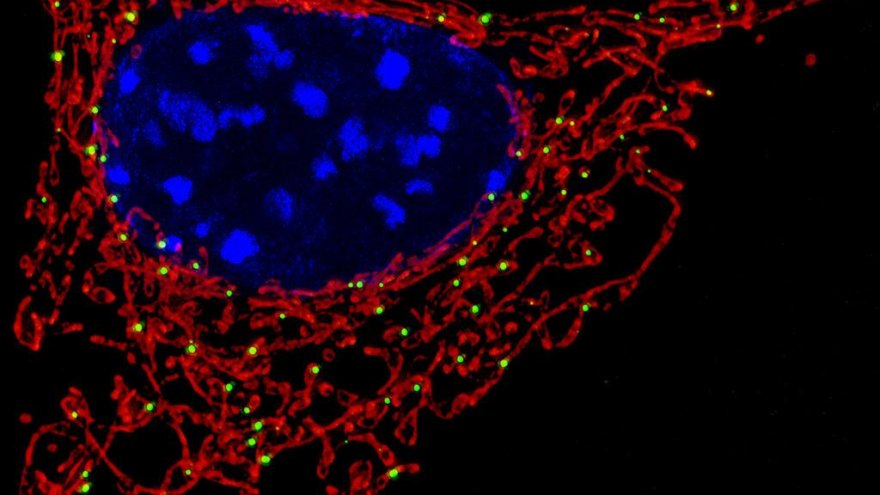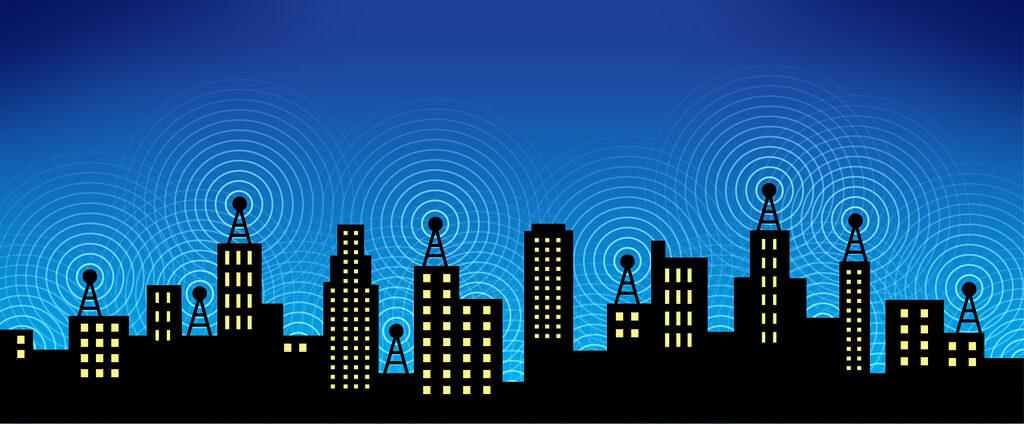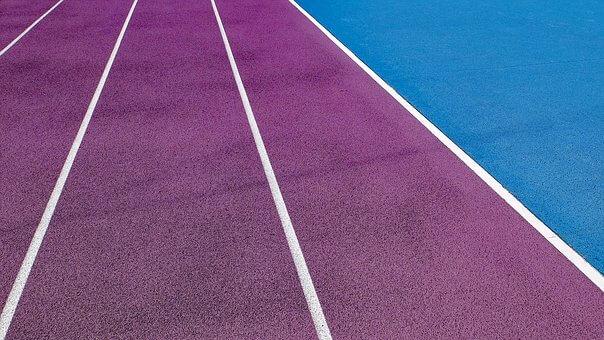Boosting Your Mitochondria to Improve Running Performance

In a college physiology class, I remember learning that mitochondria are the “powerhouse” of the cell. They convert nutrients and oxygen into something called ATP. ATP powers the cell to perform all sorts of functions, and is crucial for our ability to meet the needs of our usual daily activities and the demands placed on the body as an athlete.
It all seemed black and white back then. Eat well, sleep well, and exercise well… and your body will stay strong and healthy. Right?! Mitochondria have been a hot topic in the news lately, and it turns out they are much more complicated than I originally thought.
For one, a plethora of lifestyle factors impact the efficiency of our mitochondria and thus our energy system and ability to thrive as athletes. There are several reasons why mitochondria can become dysfunctional; stress, toxins, hormonal and nutritional deficiencies can all impact the body tremendously. Factors in our current modern lifestyle, such as wifi signals and pesticides in our food supply can deplete our cellular energy reserve to the point where the body is playing catch-up to try and make extra energy to remove the toxins we are exposed to every day.
When the demands placed on our system exceed our ability to repair and detoxify, we begin to experience symptoms like brain fog, difficulties with memory and concentration, moodiness, food cravings, sluggishness with exercise, and overall low energy that impacts our athletic performance and recovery potential. Do any of those symptoms sound familiar?
According to Dave Asprey, author of “Head Strong,” the average human cell contains 1000-2000 mitochondria, and the brain, eye and heart require more energy and have an even higher concentration (more like 10,000) but are also the first to suffer when depleted. Essentially, mitochondria control all of the critical systems in our body, and their efficiency decreases naturally with aging. That decreased efficiency is only accelerated when we are exposed to environmental triggers.

So how do we support our mitochondria to boost our function and athletic performance and prevent a sluggish system?
Dietary Do’s and Don’ts
Asprey asserts that diet is one of the major areas that can improve your mitochondrial function. He recommends the following tips:
DO:
- Boost your diet with antioxidants and polyphenols, which help fight inflammation and increase healthy gut bacteria. Blueberries, pomegranate, dark chocolate, and grape seed extract are examples.
- Eat foods that help increase your neurotransmitter abilities, which are crucial for cell communication. Neurotransmitters such as dopamine, serotonin, l-tryptophan, and acetylcholine are acquired from certain foods in our diet. Sources include: grass-fed/organic meat (beef, chicken, turkey, lamb, liver, kidney, pork), wild-caught salmon, & egg yolks, olive oil, fish & krill oil.
- Have a diet high in “healthy” fats and periodically induce a state of ketosis. Ketosis occurs when you eliminate carbohydrates from your diet and your body uses fat for energy instead. This is a more efficient process that requires less cellular energy than when you’re eating a high-carb diet. Severe depletion of carbs is not suggested as a long-term solution for your health, but according to Asprey, you can simulate ketosis by having daily bulletproof coffee that is blended with MCT oil and grass-fed butter, and that should improve your mitochondrial performance.
- Consider “intermittent fasting.” This is where you consume the majority of your meals within a 6-8-hour window. It’s shown to boost myelin, the sheath around your nerves, and helps clean out the cells. (This is controversial and not recommended for high-level athletes who have higher caloric intake requirements and multiple workouts per day).

DON’T:
- Fry, char grill, or smoke your food. This releases cancer and inflammation-causing chemicals.
- Drink just any old coffee. Coffee is often contaminated with mold in the way that it is processed, regardless of whether it’s “organic.” Mold can wreak havoc on the system, whether it’s ingested or in your environment. With “natural processing” (the way most coffee is made) after the coffee cherries are harvested, they are laid out in water for several days to make the pulp softer, which creates a breeding ground for fermentation and mold. Instead, seek out coffee that is “washed,” from a single-estate, unblended, and that comes from a source that is at a higher altitude. Asprey recommends Central American coffee, and he sells coffee on his website that has stringent testing for mold content. (link)
- Consume cereals/grains, wine, beer alcohol, dried fruit, nuts (especially peanuts), corn, MSG, artificial sweeteners, GMO’s, soy sauce, dairy, gluten, vegetable oils, trans fats, sugar, or fish that contains mercury. All of these foods and beverages overload your mitochondria and deplete their efficiency in addition to being connected to all sorts of inflammatory diseases.
- Drink tap water with fluoride. Install a filter that removed fluoride and other heavy metals from the drinking water supply.

Exercise Considerations
Endurance training, resistance training, and High Intensity Interval Training (HIIT) have all been shown to improve function on the cellular level. Experts highlight the importance of several days between intense bouts of exercise so that the system can recover and replenish cellular energy. HIIT involves strenuous activity with brief periods of “active rest.” For runners, this could mean a track or a hill workout that involves aggressive sprinting. Asprey recommends one workout per week like this if you want to maximize mitochondrial function and energy capabilities.
Breathing exercises are also important. Most of us are shallow breathers, and it’s important to periodically practice deeper breathing that stimulates the “rest and digest” functions of the autonomic nervous system. A great exercise is “belly breathing” where you inhale using your diaphragm muscle (belly bulges outward) for 3 seconds, hold for 3 seconds, and exhale for 3 seconds. Repeat this for a few minutes. I practice this every time I get into my car, and I can definitely see a difference in my energy and athletic performance on days I remember to do this simple exercise! Daily meditation is another form of exercise that supports mitochondrial function, even when you do as little as 7 minutes!

Environmental & Lifestyle Modifications
Your mitochondria react to “good” types of stress in the right quantities. An example of this is the High Intensity Interval Training described earlier. Another example is 3-5 minutes of a cold shower blast at the end of your hot shower. (It’s hard at first, but you get used to it!) The mitochondria in your eyes can also be boosted by short (10 min.) bouts of exposure to direct sunlight every day without sunglasses.
Our mitochondria are negatively impacted by our use of technology, like wifi, computer and smart phone screens, and even the light bulbs in our homes. All of these things can damage your eyes, cause poor cellular function, and impact our sleep cycles. Asprey recommends that you put your phone on airplane mode and turn off your home’s wifi at night, dim the lights a few hours before bed, and go to bed by 11pm to maintain our natural circadian rhythm. Better sleep is certainly connected to better mental and athletic performance, so it’s definitely worth it!
Reference:
Asprey, Dave. Head Strong: the bulletproof plan to activate untapped brain energy to work smarter and think faster – in just two weeks. Harper Collins. 2016.
Latest Articles
 Is Running on a Treadmill Easier Than Running Outside?Runners have their own preferences, whether it is treadmill running, running outside on the road, or exploring trails. So...
Is Running on a Treadmill Easier Than Running Outside?Runners have their own preferences, whether it is treadmill running, running outside on the road, or exploring trails. So... Is It OK to Use Trail Running Shoes on the Road?While trail running shoes can be used on roads, especially in situations where a runner encounters mixed terrains or pref...
Is It OK to Use Trail Running Shoes on the Road?While trail running shoes can be used on roads, especially in situations where a runner encounters mixed terrains or pref... How to Fix Sore Quads After Running?Rest, ice, gentle stretching, and over-the-counter pain relievers can help soothe sore quads after running. Also, ensure ...
How to Fix Sore Quads After Running?Rest, ice, gentle stretching, and over-the-counter pain relievers can help soothe sore quads after running. Also, ensure ... 10 Fruits With The Most Electrolytes to Replace Sports DrinksThese fruits are high in electrolytes such as potassium, magnesium, and calcium, essential for hydration, muscle function...
10 Fruits With The Most Electrolytes to Replace Sports DrinksThese fruits are high in electrolytes such as potassium, magnesium, and calcium, essential for hydration, muscle function...

